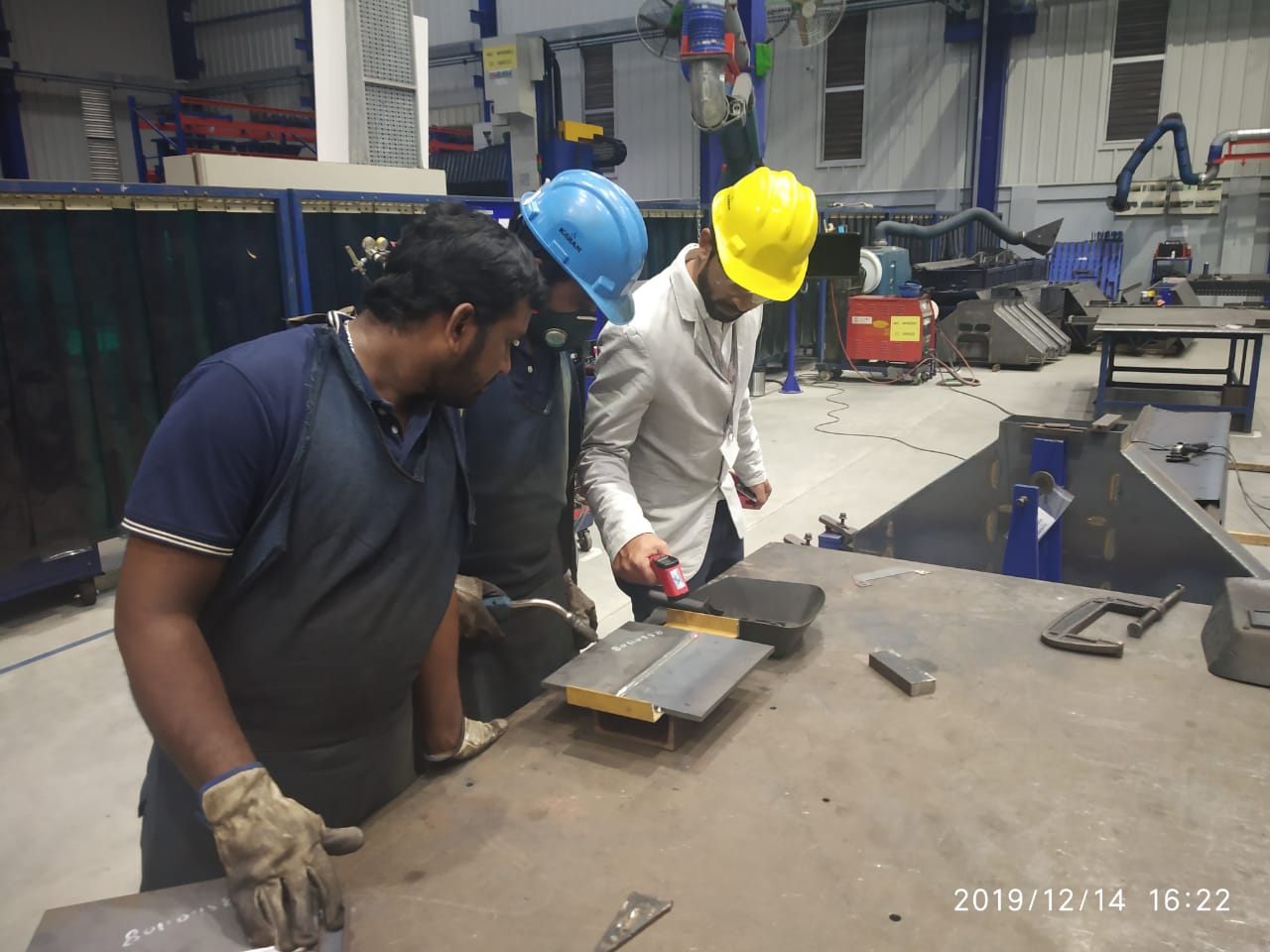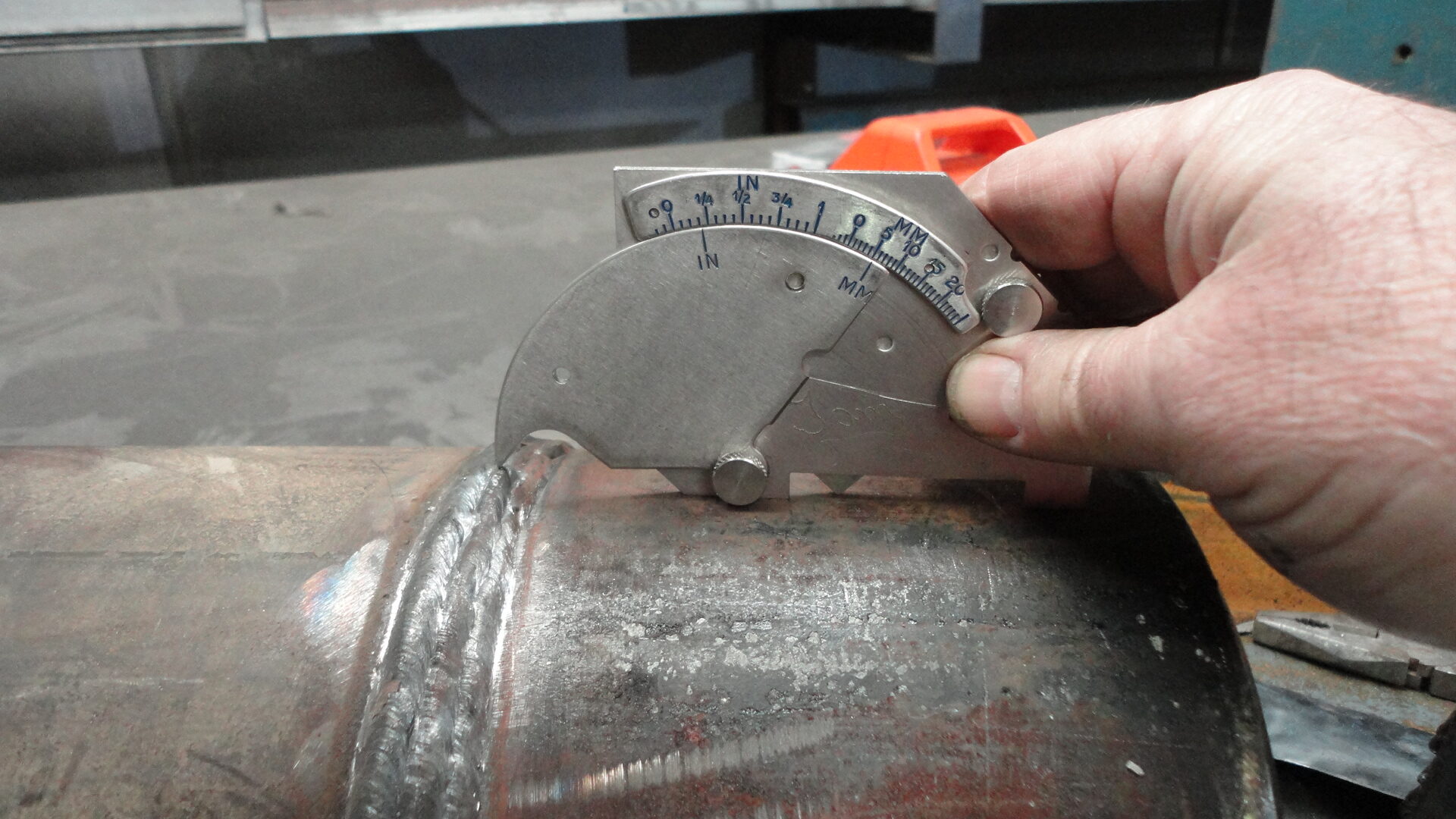A Comprehensive List for Effective Welding Assessment Practices
In the world of welding, the stability of structures is vital, demanding a rigorous strategy to examination practices. An extensive list works as a vital tool in making sure adherence to market criteria, including important pre-welding, in-process, and post-welding examinations. By systematically attending to product verification, weld high quality, and comprehensive documentation, organizations can considerably enhance safety and security and efficiency. What certain elements should be prioritized in each stage to attain optimal outcomes? Discovering these important parts can generate insights that greatly effect welding operations.
Recognizing Welding Criteria
Welding requirements play a vital role in ensuring the quality and safety of welded parts and frameworks. These criteria establish the requirements for products, procedures, screening, and inspection, thus providing a structure for constant quality control in welding procedures. Various organizations, consisting of the American Welding Society (AWS), the International Organization for Standardization (ISO), and the American Society of Mechanical Engineers (ASME), have actually created detailed standards that govern various elements of welding.
Understanding welding criteria is necessary for specialists in the area, as adherence to these standards minimizes the danger of flaws and failings in bonded joints. These requirements cover particular needs for weld top quality, consisting of appropriate resistances, the sort of welding techniques to be made use of, and the credentials needed for examiners and welders.

Pre-Welding Evaluation Actions
Before any welding process begins, a thorough pre-welding inspection is vital to determine potential concerns that may endanger the quality of the weld. This initial step offers as a vital foundation for making sure compliance with applicable welding codes and criteria.
The initial step in the pre-welding assessment is to verify the materials being made use of. This includes checking for the appropriate type and quality of steels as defined in the project documents. Next off, it is crucial to inspect the fit-up of the parts to make sure appropriate alignment and joint setup. Misalignment can cause insufficient infiltration and architectural weaknesses.
Furthermore, evaluating the sanitation of the surfaces is important; impurities such as paint, oil, or rust can adversely influence the high quality of the weld. Following this, an extensive assessment of the welding equipment must be conducted, guaranteeing that it is calibrated and in excellent working problem.
Last but not least, assessing the credentials of the welding personnel is imperative. Welders need to possess the necessary accreditations and experience to do the details welds needed for the job. By adhering to these pre-welding evaluation actions, the likelihood of flaws and failures in the last weld can be considerably decreased.

In-Process Assessment Techniques
In-process evaluation techniques play an essential duty in ensuring the integrity and high quality of welds as they are being implemented. These strategies permit examiners to determine problems or variances from requirements in genuine time, thus making certain and stopping pricey repair services adherence to style requirements.
One secret technique entails aesthetic assessment, where assessors analyze the weld bead for harmony, penetration, and appropriate account. This can be matched by the use assesses to determine weld measurements, ensuring compliance with fixed tolerances. Additionally, the execution of non-destructive testing (NDT) methods, such as ultrasonic testing or magnetic fragment screening, during the welding procedure can reveal subsurface imperfections that may not show up externally.
One more crucial facet is checking welding criteria, including voltage, amperage, and take a trip rate. Consistency in these specifications is crucial for achieving ideal weld quality. Recording these specifications during the welding procedure gives a deducible document for future referral.
Training employees in correct examination strategies and using appropriate devices enhances the efficiency of in-process assessments. By integrating these techniques, organizations can attain better welds, reduce rework, and eventually make certain the safety and security and reliability of welded structures.
Post-Welding High Quality Checks
Following the completion of welding operations, post-welding high quality checks are important to verify that the welds meet all defined needs and requirements. These checks are important for guaranteeing the stability and durability of the bonded joints. The evaluation process normally begins with an aesthetic evaluation, evaluating for surface flaws such as splits, porosity, or insufficient combination.
Ultimately, non-destructive screening (NDT) techniques, such as ultrasonic screening, radiographic testing, or magnetic particle testing, may be employed to spot interior flaws that are not noticeable to the naked eye. Each approach has its find this distinct benefits and is picked based upon the weld's location, product kind, and the nature of the application.
Additionally, verifying dimensional accuracy is an essential aspect imp source of post-welding quality checks. This includes determining the weld's alignment, profile, and size to ensure conformity with engineering specifications. Lastly, assessing the mechanical residential properties of the weld, including tensile strength and ductility, can provide more guarantee of efficiency under operational problems. Overall, extensive post-welding examinations are vital for preserving adherence, safety, and performance to governing and market criteria.
Documentation and Reporting
Just how can reliable documentation and reporting boost the welding examination process? Precise documents and extensive coverage are important parts that guarantee the stability and top quality of welding operations. Welding Inspection Milwaukee. They offer as an official record of evaluation findings, helping with responsibility and traceability in compliance with industry criteria

A well-structured reporting system makes it possible for examiners to clearly connect any kind of disparities, locations, or non-conformances needing enhancement. This openness cultivates an atmosphere of constant enhancement, as stakeholders can readily evaluate previous efficiency and execute restorative actions.
Moreover, reliable paperwork includes thorough records such as welding procedure specs (WPS), welder certifications, and evaluation checklists. These elements give a framework for assessing weld high quality and adherence to developed guidelines. In the event of disputes or high quality concerns, complete paperwork works as a trusted referral, reducing uncertainty and securing all events included.
Last but not least, preserving organized records helps in training and licensing personnel, making certain that industry finest practices are maintained. Inevitably, precise documents and reporting not only enhance the welding assessment process however also add to the overall security and integrity of bonded structures.

Conclusion
In verdict, a comprehensive list for reliable welding evaluation techniques is essential for making certain top quality and safety in bonded frameworks. Adherence to established welding requirements, meticulous pre-welding assessments, strenuous in-process examinations, and detailed post-welding top quality checks jointly contribute to the stability of welded joints.
Welding criteria play a critical role in making sure the high quality and safety and security of bonded structures and parts. Numerous companies, including the American Welding Culture (AWS), the International Organization for Standardization (ISO), and the American Society of Mechanical Engineers (ASME), have established thorough standards that govern various facets of welding.
Following the completion of welding operations, post-welding top quality checks are important to verify that the welds satisfy all defined needs and criteria - Welding Inspection Milwaukee.In verdict, a detailed list for efficient welding examination practices is crucial for making sure quality and safety in welded frameworks. Adherence to established welding requirements, precise pre-welding examinations, strenuous in-process examinations, and comprehensive More Help post-welding quality checks collectively add to the stability of bonded joints